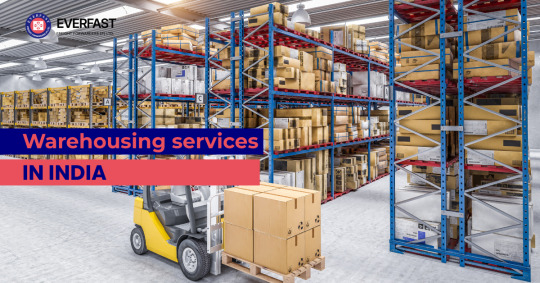#Inventory Management for E-commerce
Explore tagged Tumblr posts
Text
Stock Position Report
https://alzerp.com/kb/docs/current-stock/
ALZERP’s Stock Position Report provides a real-time snapshot of inventory levels across different product categories and store locations. By offering flexible filtering options, including zero stock and sales quantity inclusion, businesses can gain valuable insights into their stock health. This data-driven report empowers informed decision-making regarding replenishment, stock optimization, and preventing stockouts. With options to export or print, the report ensures easy accessibility and sharing of inventory information.
Key Features:
Date Selection: Choose the date for which you want to generate the stock position report.
Product Filtering: Filter products by category and store location.
Zero Stock Inclusion: Option to include or exclude items with zero stock.
Sales Quantity Inclusion: Option to include sales quantity within the specified date range.
Report Format: Displays product name, quantity, and unit of measurement for each item.
Grouping: Organizes the report by warehouse for better visibility.
Export and Print: Allows exporting the report as a PDF or printing it for physical records.
#Automated Inventory System#Cloud Inventory Automation#Cloud Inventory Control System#Cloud Inventory Management#Cloud Inventory Mobile App#Cloud Inventory Software for Enterprises#Cloud Inventory Tracking#Cloud Stock Control#Cloud Warehouse Management#Cloud-Based Inventory Management Solutions#Cloud-Based Inventory Solutions#Cloud-Based Inventory System for Wholesalers#Cloud-Based Stock Management#Customizable Inventory Software#ERP Inventory Management#Inventory#Inventory Control Software#Inventory Forecasting Software#Inventory Management Analytics#Inventory Management and Reporting#Inventory Management Application#Inventory Management Dashboard#Inventory Management for E-commerce#Inventory Management for Manufacturing#Inventory Management for Retail#Inventory Management Platform#Inventory Management Software#Inventory Management Solutions#Inventory Management System#Inventory Management Tools
0 notes
Text
We are delighted to announce our fulfilment and packaging partnership with @olliebearman.
Ollie is a British racing driver who made an incredible Formula One debut for Ferrari in the 2024 Saudi Arabian Grand Prix, substituting for Carlos Sainz Jr.
Subsequently, Ollie has signed a contract with Haas and he is set to make a full-season debut in 2025 on a multi-year deal.




#distribution#order fulfilment#warehousing#ecommerce#mensfashion#ollie bearman#worldwide shipping#shipping#apparel#fulfilment partner#pick and pack#reverselogistics#3pl logistics#3plserviceprovider#3pl warehouse services#customer service#inventory management#f1#dropshipping#success#continuous improvement#warehouse#logistics#exporting#importing#same day delivery#next day delivery#packaging#e commerce#storage
3 notes
·
View notes
Text
Simplify Online Selling: Integrate ERPNext with Your Website by Sigzen
In today’s digital world, selling online is a must-do for businesses aiming to reach more customers and thrive. But managing an online store efficiently can be challenging without the right tools. That’s where ERPNext comes in. It’s like a super-powered assistant for your online business, helping you manage everything from inventory to customer orders seamlessly. Let’s explore how integrating…

View On WordPress
#business growth#business optimization#CRM#E-commerce Integration#Ecommerce Solutions#Financial Management#Inventory Management#Online Sales
3 notes
·
View notes
Text
#Dropshipping#Amazon#E-commerce#Online Business#Selling on Amazon#Amazon Marketplace#Dropshipping Tips#Dropshipping Strategies#Amazon Sellers#Online Retail#Business Growth#Amazon FBA#eCommerce Tips#Retail Arbitrage#Amazon Selling Guide#Product Sourcing#Inventory Management#Customer Service#Marketing Strategies#Profitable Dropshipping
2 notes
·
View notes
Text
How Warehousing Services in India Drive Supply Chain Efficiency

For businesses navigating today’s competitive market, warehousing services in India offer more than just storage—they’re the backbone of efficient logistics. Whether you're a growing D2C brand, a manufacturer, or a retail distributor, using well-organized and tech-enabled warehouse services ensures timely delivery, reduced overheads, and greater customer satisfaction.
India's warehousing industry is booming, driven by growing e-commerce, infrastructure upgrades, and the push toward automation. These services now cater to a wide range of industries, offering smart, scalable, and cost-effective solutions.
What You Can Expect from Warehousing Services in India
Strategic Locations: Warehouses are located near ports, airports, and industrial corridors to cut down transit time.
Multi-Model Storage: Facilities support pallet storage, bulk goods, and fragile or climate-sensitive items.
Seamless Inventory Management: Real-time tracking through advanced Warehouse Management Systems (WMS).
High-Level Security: 24/7 monitoring, restricted access, fire protection, and theft deterrent systems.
E-commerce Fulfillment Support: Includes picking, packing, labeling, and returns processing.
Different Types of Warehouses in India
Public Warehouses – Affordable and accessible for multiple businesses.
Private Warehouses – Exclusive facilities built for a specific company.
Cold Chain Warehouses – Ideal for pharmaceuticals, fresh produce, and frozen items.
Fulfillment Centers – Fast and responsive warehouses for e-commerce operations.
Bonded Warehouses – Secure facilities under customs supervision for import/export businesses.
Top Advantages of Warehousing in India
Optimize inventory turnover
Minimize operational and storage costs
Enhance order accuracy and delivery speed
Handle seasonal fluctuations with scalable space
Improve customer satisfaction through faster dispatch
FAQs – Warehousing Services in India
Q1: Are warehousing services limited to metro cities? A: No, they’ve expanded to tier-2 and tier-3 cities, enabling better regional distribution.
Q2: Can warehousing solutions integrate with my business software? A: Yes, many providers support ERP, CRM, and e-commerce platform integrations.
Q3: What industries commonly use warehousing services in India? A: E-commerce, FMCG, electronics, auto parts, pharmaceuticals, and even textiles rely heavily on warehousing.
Q4: Is it possible to get on-demand or short-term storage? A: Absolutely. Many warehousing providers offer flexible rental models, including short-term contracts.
Conclusion
The growth of warehousing services in India is reshaping how companies manage logistics and scale their operations. From improving inventory accuracy to ensuring timely last-mile delivery, these services support modern supply chain goals across industries. As businesses demand faster turnarounds and better customer experiences, investing in professional warehousing is no longer optional—it’s essential for success.
#Warehousing services in India#Indian logistics#supply chain solutions#warehouse management#fulfillment centers India#cold storage India#bonded warehouses India#e-commerce warehousing#logistics in India#inventory management#warehouse solutions#WMS India#third-party logistics India#storage services India
0 notes
Text
Exploring the Benefits of EPROLO in the SaaS Platform Industry
In today's fast-paced e-commerce landscape, the SaaS platform industry is thriving, and EPROLO is a standout player in this space. As a robust dropshipping app, EPROLO simplifies the process for entrepreneurs looking to launch their online stores with ease.
One of the key advantages of using EPROLO is its user-friendly interface that allows users to seamlessly integrate their online shops with various suppliers. This means you can access a vast array of products and manage your inventory efficiently, all from one convenient platform.
Furthermore, EPROLO offers exceptional support and resources for its users, ensuring that even those new to dropshipping can navigate the challenges with confidence. The platform is designed to empower entrepreneurs, providing them with the tools they need to succeed and grow their businesses.
In conclusion, if you're considering entering the dropshipping arena, EPROLO's dropshipping app is a fantastic choice that can help you streamline operations and maximize your potential for success.
0 notes
Text
Discover the Best Dropshipping Suppliers in the USA with EPROLO!
Are you looking to elevate your dropshipping business? Look no further than EPROLO, one of the leading dropshipping suppliers! With a vast range of products and a user-friendly platform, EPROLO makes it easy for entrepreneurs to find and sell high-quality items without the hassle of inventory management.
EPROLO offers seamless integration with popular e-commerce platforms, allowing you to effortlessly manage your online store. Their reliable shipping options ensure that your customers receive their orders promptly, enhancing satisfaction and fostering loyalty.
What sets EPROLO apart is their commitment to quality and customer service. They provide detailed product information, so you can make informed decisions about what to sell. Plus, their dedicated support team is always ready to assist you with any inquiries.
Join the growing community of successful dropshippers who trust EPROLO as their go-to supplier. Start your journey today and watch your business thrive!
eprolo.com
0 notes
Text
Exploring Success in the Dropshipping Industry with Inkedjoy
The dropshipping industry offers incredible opportunities for entrepreneurs, especially with brands like Inkedjoy leading the way in print on demand services. With the rise of e-commerce, Inkedjoy provides a seamless platform for creating customized products that resonate with customers.
Whether you're just starting out or looking to expand your business, Inkedjoy makes it easy to design unique items that showcase your creativity. The print on demand model eliminates the need for upfront inventory, allowing you to focus on marketing and building your brand.
Embrace the excitement of entrepreneurship and tap into the potential of the dropshipping market with Inkedjoy. The possibilities are endless, and with the right approach, you can achieve remarkable success in this thriving industry!
#print on demand#dropshipping#business expansion#customized products#e-commerce#inventory management#entrepreneurship#brand building
0 notes
Text
Exploring the Exciting World of Dropshipping with Inkedjoy
The dropshipping industry has been gaining incredible momentum, and one of the standout brands in this space is Inkedjoy. Known for its exceptional print on demand products, Inkedjoy provides entrepreneurs with a fantastic opportunity to create unique, customized items without the hassle of inventory management.
With a wide range of products, from stylish apparel to eye-catching accessories, Inkedjoy allows sellers to express their creativity and cater to diverse customer preferences. This flexibility is a game changer for those looking to build their own brands.
Moreover, the print on demand model means that each item is produced only after a sale is made, reducing waste and ensuring that customers receive high-quality products tailored to their tastes.
Whether you're just starting out in the e-commerce world or looking to expand your existing business, partnering with Inkedjoy can lead to exciting possibilities. Dive into the vibrant world of dropshipping and unleash your entrepreneurial spirit today!
#e-commerce#Inkedjoy#sustainability#print on demand#entrepreneurship#accessories#inventory management#apparel
0 notes
Text
Exploring the World of Branded Dropshipping with EPROLO
Are you interested in starting your own e-commerce business? The dropshipping industry offers an exciting opportunity, especially with brands like EPROLO leading the way in branded dropshipping.
EPROLO provides a seamless platform for entrepreneurs to create their own unique brands without the hassle of inventory management. With EPROLO, you can easily customize products, ensuring that your brand stands out in a competitive market. The best part? You don't need a huge upfront investment, making it accessible for anyone willing to take the plunge into entrepreneurship.
Have you considered how branded dropshipping can elevate your business? By offering customized products that resonate with your audience, you can build a loyal customer base and enhance your brand identity. EPROLO supports you every step of the way, providing tools and resources to help you succeed.
Let's embrace the opportunities in the dropshipping industry and create something amazing together with EPROLO!
eprolo.com/branding
0 notes
Text
Exploring the Exciting World of Dropshipping with Inkedjoy
The dropshipping industry is thriving, and one of the standout brands making waves is Inkedjoy. Specializing in print on demand products, Inkedjoy allows entrepreneurs to design and sell custom merchandise without the hassle of inventory management.
With print on demand, every product is created only after a customer places an order. This means you can offer a wide variety of unique items, from apparel to home decor, all tailored to your customer’s preferences. The flexibility and creativity involved in this model make it an exciting opportunity for anyone looking to enter the e-commerce space.
Inkedjoy ensures high-quality prints and a seamless shopping experience, which is essential for building a loyal customer base. Plus, with their user-friendly platform, even those new to dropshipping can easily navigate the process and start their own online store.
Embrace the potential of the dropshipping industry with Inkedjoy and watch your entrepreneurial dreams come to life!
0 notes
Text
Stock Valuation Reports (Current Stock With Price)
ALZERP’s Stock Valuation Report provides a comprehensive analysis of inventory value based on various valuation methods. By calculating stock quantities and their corresponding monetary values, businesses can make informed decisions related to finance, inventory management, and overall business strategy.
Key Features:
Valuation Methods: Offers multiple valuation methods (unit purchase cost, unit sales price, accounting value) to assess inventory value.
Product and Warehouse Filtering: Allows users to select specific products or warehouses for valuation.
Date Selection: Determines the date for which the stock valuation is calculated.
Report Format: Displays product name, quantity, unit of measurement, unit price, and total value.
Export and Print: Enables exporting and printing the report for further use.
https://alzerp.com/kb/docs/current-stock-with-price/
#Automated Inventory System#Cloud Inventory Automation#Cloud Inventory Control System#Cloud Inventory Management#Cloud Inventory Mobile App#Cloud Inventory Software for Enterprises#Cloud Inventory Tracking#Cloud Stock Control#Cloud Warehouse Management#Cloud-Based Inventory Management Solutions#Cloud-Based Inventory Solutions#Cloud-Based Inventory System for Wholesalers#Cloud-Based Stock Management#Customizable Inventory Software#ERP Inventory Management#Inventory#Inventory Control Software#Inventory Forecasting Software#Inventory Management Analytics#Inventory Management and Reporting#Inventory Management Application#Inventory Management Dashboard#Inventory Management for E-commerce#Inventory Management for Manufacturing#Inventory Management for Retail#Inventory Management Platform#Inventory Management Software#Inventory Management Solutions#Inventory Management System#Inventory Management Tools
0 notes
Text
How to Start Dropshipping with EPROLO: A Beginner's Guide
Are you interested in starting your own online business? The dropshipping industry offers an exciting opportunity to do just that, and EPROLO is here to help you every step of the way!
First, let's talk about what dropshipping is. Dropshipping is a retail fulfillment method where a store doesn't keep the products it sells in stock. Instead, when you sell a product, you purchase the item from a third party and have it shipped directly to the customer. This means you don't have to worry about inventory management or shipping logistics, allowing you to focus on growing your business.
Now, how to start dropshipping with EPROLO? Here are some easy steps to get you going:
Create Your EPROLO Account: Sign up for an EPROLO account to access a wide range of products that you can sell. The platform is user-friendly, making it simple for beginners.
Choose Your Niche: Selecting a niche is crucial for your dropshipping success. Think about what products you are passionate about or what trends are currently popular. EPROLO offers a variety of categories to choose from.
Set Up Your Online Store: You can create your online store using platforms like Shopify or WooCommerce. EPROLO integrates seamlessly with these platforms, making it easy to manage your orders and products.
Import Products: Browse EPROLO’s extensive catalog and import products directly to your online store. You can customize product details and pricing to fit your brand.
Market Your Store: Once your store is set up, it’s time to attract customers! Use social media marketing, search engine optimization (SEO), and online advertising to promote your store and drive traffic.
Process Orders: When a customer places an order on your site, you can easily fulfill it through EPROLO. Simply place the order on their platform, and they will handle the shipping directly to your customer.
Provide Excellent Customer Service: Building a loyal customer base is essential. Respond promptly to inquiries and ensure your customers have a positive shopping experience.
Starting a dropshipping business with EPROLO is a fantastic way to enter the e-commerce space without the burden of managing inventory. With dedication and the right strategies, you can turn your dropshipping venture into a successful online business. Happy selling!
#social media#niche selection#dropshipping#e-commerce#retail fulfillment#EPROLO#SEO#inventory management
0 notes
Text
Thriving in the Dropshipping Industry with EPROLO
The dropshipping industry offers incredible opportunities for aspiring entrepreneurs, and EPROLO is a standout player in this space. With its seamless integration and user-friendly platform, EPROLO simplifies the dropshipping process, allowing you to focus on building your brand and connecting with customers.
One of the best features of EPROLO is its vast product catalog, which enables you to find trending items to sell without the hassle of inventory management. Plus, their reliable shipping options ensure that your customers receive their orders promptly, enhancing customer satisfaction.
If you're looking to start or scale your dropshipping business, EPROLO provides the tools and support you need to succeed. With a commitment to quality and efficiency, EPROLO is paving the way for a bright future in the dropshipping landscape. Embrace the possibilities and watch your business thrive!
1 note
·
View note
Text
Exploring the Thriving World of Dropshipping with EPROLO
The dropshipping industry is booming, and it's an exciting time to be involved! With the rise of e-commerce, entrepreneurs are finding innovative ways to run their businesses without the hassle of inventory management. One standout player in this space is EPROLO, a notable dropshipping supplier.
EPROLO offers a seamless experience for online retailers, providing access to a wide range of products and fast shipping options. This means that sellers can focus on marketing and growing their brands while EPROLO handles the logistics. Their user-friendly platform simplifies the process of finding dropshipping suppliers, making it easy for anyone to start their own business.
Not only does EPROLO provide quality products, but they also support their clients with excellent customer service. Whether you're just starting out or looking to scale your existing business, EPROLO is there to help you every step of the way. Their commitment to empowering entrepreneurs is truly inspiring.
In conclusion, if you're considering entering the dropshipping market, look no further than EPROLO. With their reliable services and extensive product range, you can confidently build your online store and achieve your business goals. Happy dropshipping!
eprolo.com
#online retailers#logistics#entrepreneurs#seamless experience#product range#customer service#e-commerce#inventory management
0 notes
Text
Exploring the Exciting World of Dropshipping with EPROLO
Hello everyone! Are you curious about the dropshipping industry and how it can be a fantastic opportunity for entrepreneurs? Let’s dive into it, focusing on EPROLO, a leading dropshipping supplier.
As you may know, dropshipping allows you to run your own online store without the hassle of managing inventory or shipping products. EPROLO simplifies this process by offering a wide range of products and efficient fulfillment services. This means you can focus on marketing your store and growing your brand while EPROLO handles the logistics.
One of the standout features of EPROLO is their product sourcing capability. They provide access to a vast array of products across various niches, ensuring that you can find items that resonate with your target audience. Whether you're interested in fashion, electronics, or home goods, EPROLO has you covered.
Moreover, their user-friendly platform makes it easy to integrate with popular e-commerce platforms like Shopify and WooCommerce. You can seamlessly import products, customize listings, and manage orders with just a few clicks, saving you time and effort.
Another great aspect of EPROLO is their commitment to quality. They work with reliable suppliers to ensure that you receive high-quality products that your customers will love. This not only enhances customer satisfaction but also helps build your brand's reputation.
In addition, EPROLO offers competitive pricing, which is crucial for maximizing your profit margins. With their support, you can set competitive prices while still enjoying a healthy profit.
Overall, the dropshipping industry is booming, and with a partner like EPROLO, you can embark on your entrepreneurial journey with confidence. If you're looking for reliable dropshipping suppliers, EPROLO is definitely worth considering. Happy dropshipping!
#e-commerce#online store#fulfillment services#inventory management#entrepreneurs#customer satisfaction#product sourcing#dropshipping
0 notes